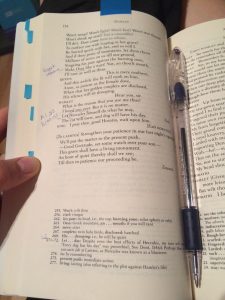Other than the necessary snack and bathroom breaks, Branagh’s Hamlet (1996) is actually quite an easy and enjoyable watch. It is clear that Branagh and all the actors he chose understand the lines or at least how they should be expressed as per this rendition. The acting is great and the story is very well presented. Because Branagh chose only to lightly modify Shakespeare’s original script, it is very easy to follow along should you have the text in front of you. It is by this practice that I noticed a repetition of references to Greek and Roman mythology.

In Hamlet’s first soliloquy in Act 1, Scene 2 he makes reference to Niobe and Hercules. I took note and considered this a way of demonstrating Hamlet’s education. This reference of Hercules is to demonstrate how far from a father Polonius is to Hamlet. Without knowing who Hercules is or what he represents, the idea being portrayed is clear in the comparison and delivery of the line.
Later in Act 5, Scene 1, Hamlet makes reference to Alexander the Great, Caesar and again Hercules. The note in Robert Miola’s Norton edition to this second Hercules reference (Let Hercules himself do what he may, l.271) is that it could be a jab at Laertes. It is here that I question who in Shakespeare’s original audiences would be getting these references.
Without the script, there is no way I would have caught the repetition in the first place and without a close reading would I be understanding the references. So who exactly was he writing them for?

Leave a Reply
You must be logged in to post a comment.